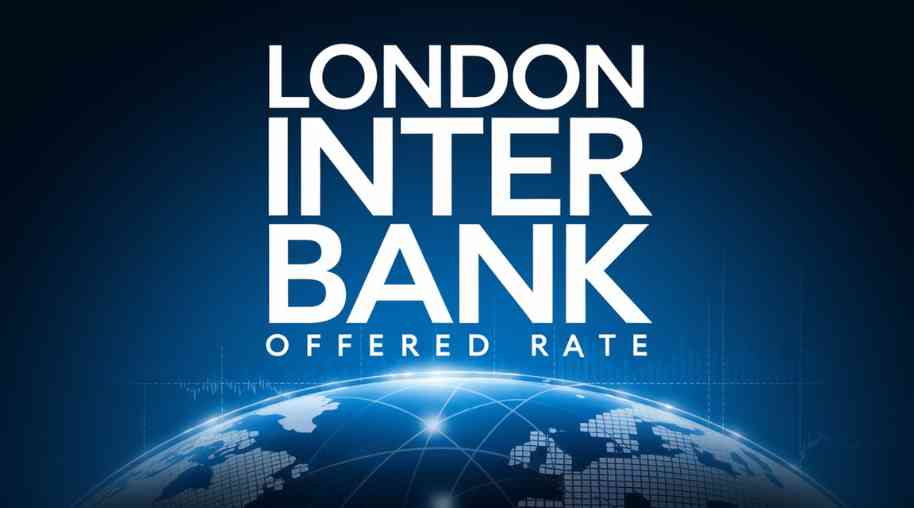LIBOR Full Form-London Inter Bank Offered Rate
by Shashi Gaherwar
0 1815
London Interbank Offered Rate (LIBOR): History, Significance, and Transition to Alternative Rates
Introduction
The London Interbank Offered Rate (LIBOR) was one of the most critical interest rate benchmarks used in global financial markets. It determined the cost of borrowing between banks and influenced interest rates on loans, mortgages, and derivatives worldwide. However, due to manipulation scandals and declining credibility, LIBOR was officially phased out and replaced by alternative reference rates.

This article explores the history, significance, calculation, controversies, and transition from LIBOR to alternative rates such as SOFR, SONIA, and €STR.
What is LIBOR?
LIBOR was an interest rate at which major banks in London borrowed from each other in the interbank market. It was used as a reference rate for:
- Corporate Loans and Mortgages
- Derivatives and Swaps
- Bonds and Securitization
- Risk Management and Hedging
LIBOR was calculated in multiple currencies, including USD, GBP, EUR, JPY, and CHF, across different time durations ranging from overnight to 12 months.
History of LIBOR
- 1960s-1980s: LIBOR emerged as a benchmark when banks needed a standard rate for syndicated loans.
- 1986: The British Bankers' Association (BBA) formally introduced LIBOR as an official financial benchmark.
- 1990s-2000s: LIBOR became the dominant benchmark rate for financial contracts worth trillions of dollars.
- 2008 Financial Crisis: Heavy reliance on LIBOR exposed vulnerabilities in global finance.
- 2012 Scandal: Major banks were found guilty of manipulating LIBOR rates, leading to fines and loss of trust.
- 2021-2023: LIBOR was phased out and replaced with alternative risk-free rates (RFRs).
How was LIBOR Calculated?
LIBOR was determined daily based on submissions from a panel of banks. The process included:
- Banks submitted estimated borrowing rates at which they could borrow funds.
- Highest and lowest values were removed, and the average of the remaining rates was taken.
- The final rate was published by ICE Benchmark Administration for different currencies and time periods.
Why Was LIBOR Important?
- Global Financial Standard: Used in contracts worth over $350 trillion.
- Short-Term Interest Rate Indicator: Helped assess economic conditions and liquidity.
- Risk Management: Essential for setting variable interest rates in loans and mortgages.
- Derivatives Market Benchmark: Used in swaps, futures, and structured finance.
LIBOR Manipulation Scandal
- 2012 Investigation: Revealed that major banks, including Barclays, UBS, and Deutsche Bank, manipulated LIBOR rates.
- Fake Rate Submissions: Banks falsely reported borrowing costs to influence financial instruments.
- Legal and Financial Consequences: Institutions faced billions in fines and loss of credibility.
- Regulatory Crackdown: Authorities worldwide decided to phase out LIBOR.
Transition from LIBOR to Alternative Reference Rates (ARRs)
Due to manipulation risks and declining interbank lending activity, global regulators decided to replace LIBOR with alternative risk-free rates (RFRs):
- SOFR (Secured Overnight Financing Rate): Used in the U.S., based on Treasury repurchase agreements.
- SONIA (Sterling Overnight Index Average): Used in the UK, based on overnight sterling transactions.
- €STR (Euro Short-Term Rate): Used in the Eurozone, based on unsecured overnight borrowing.
Challenges in LIBOR Transition
- Contract Adjustments: Many existing contracts referenced LIBOR, requiring adjustments.
- Market Adaptation: Financial institutions needed to integrate new rates into operations.
- Liquidity Issues: Alternative rates lacked sufficient liquidity in early adoption phases.
- Operational Complexity: Transition involved legal, technological, and financial adjustments.
Advantages of Alternative Rates Over LIBOR
- Based on Actual Transactions: Unlike LIBOR, RFRs use real market data.
- Less Manipulation Risk: Not dependent on estimates from banks.
- Greater Transparency: More robust and reliable for financial markets.
- Regulatory Support: Backed by major financial institutions and central banks.
Impact of LIBOR Replacement on Financial Markets
- Improved Financial Stability: Reduces risk of rate manipulation.
- More Accurate Pricing: Alternative rates reflect actual borrowing costs.
- Changes in Loan Structures: Shift from LIBOR-linked loans to SOFR-linked loans.
- Global Standardization: Encourages harmonization of interest rate benchmarks.
Future of Financial Benchmarks Post-LIBOR
- Wider Adoption of RFRs in banking and financial contracts.
- Innovations in Rate Calculation to improve transparency.
- Potential for Blockchain & Smart Contracts to automate rate adjustments.
- Increased Role of Central Banks in financial benchmarks.
The London Interbank Offered Rate (LIBOR) was a fundamental pillar of the global financial system, influencing interest rates, loans, and derivatives for decades. However, due to manipulation scandals and market inefficiencies, LIBOR was phased out in favor of alternative risk-free rates like SOFR, SONIA, and €STR.
As financial markets continue to evolve, the transition to transparent, transaction-based benchmarks marks a significant shift toward a more stable and reliable financial system.
Further Learning Resources
If you’re passionate about building a successful blogging website, check out this helpful guide at Coding Tag – How to Start a Successful Blog. It offers practical steps and expert tips to kickstart your blogging journey!
For dedicated UPSC exam preparation, we highly recommend visiting www.iasmania.com. It offers well-structured resources, current affairs, and subject-wise notes tailored specifically for aspirants. Start your journey today!

Share:








Comments
Waiting for your comments